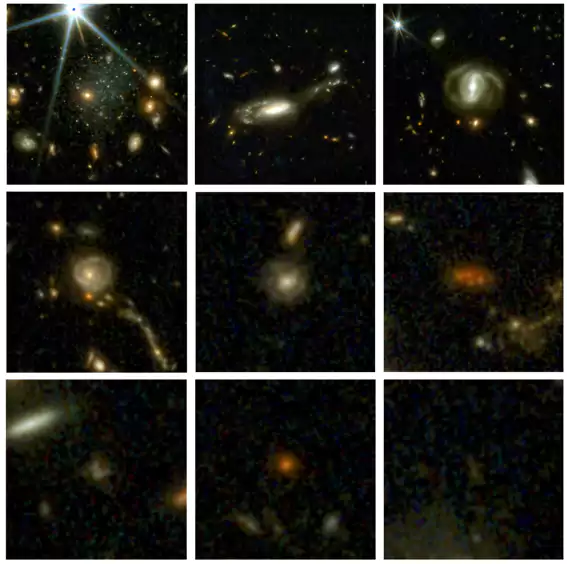The COSMOS-Web project spans 13.5 billion years of the universe’s history, discovering new galaxies and black holes. Find out what astronomers have learned from observations by the James Webb Space Telescope.
An international team of scientists has published a huge array of scientific data that underlies the largest map of the universe. The new project, called COSMOS-Web, is based on data obtained by the James Webb Space Telescope. It includes images of 800,000 different galaxies. The resulting materials challenge many existing ideas about the young universe, writes Phys.org.
“Imagine a printed image of the Hubble Ultra Deep Field on a regular sheet of paper. Our image will be much larger — like a huge mural 13 x 13 feet (1 foot = 0.3048 meters) and the same depth. The scale is impressive!” comments Caitlin Casey, a professor of physics at the University of California, Santa Barbara. She compares the size of the new catalog with the famous Hubble Ultra Deep Field image taken by NASA in 2004, which contains about 10,000 galaxies.
COSMOS-Web covers a time span of about 13.5 billion years — almost the entire age of the universe, which is about 13.8 billion years. That is, this map reflects about 98% of the entire history of the cosmos. The goal of astronomers was not only to examine the most interesting early galaxies, but also to identify common characteristics of the early stages of the universe’s evolution, including the formation of the first stars, galaxies, and black holes.

The COSMOS-Web image is available for interactive viewing. Source: cosmos2025.iap.fr/fitsmap
“The universe is organized into dense regions of matter and vast voids,” Casey explains. The team’s goal, she says, was not so much to find the most distant objects, but to understand the environments of ancient galaxies.
Before the launch of the James Webb telescope, scientists estimated the maximum number of galaxies they could see from the first period (up to half a billion years after the Big Bang) based on the capabilities of the Hubble spacecraft. They believed that the first galaxies were extremely rare. “This makes sense: first came the Big Bang, then it took time for the matter to compress under the influence of gravity and the process of star formation to begin. But unexpectedly, the James Webb telescope showed us about ten times more galaxies than expected, and at enormous distances. Moreover, huge black holes are being discovered that were previously invisible when observed through the Hubble,” the expert concludes.
